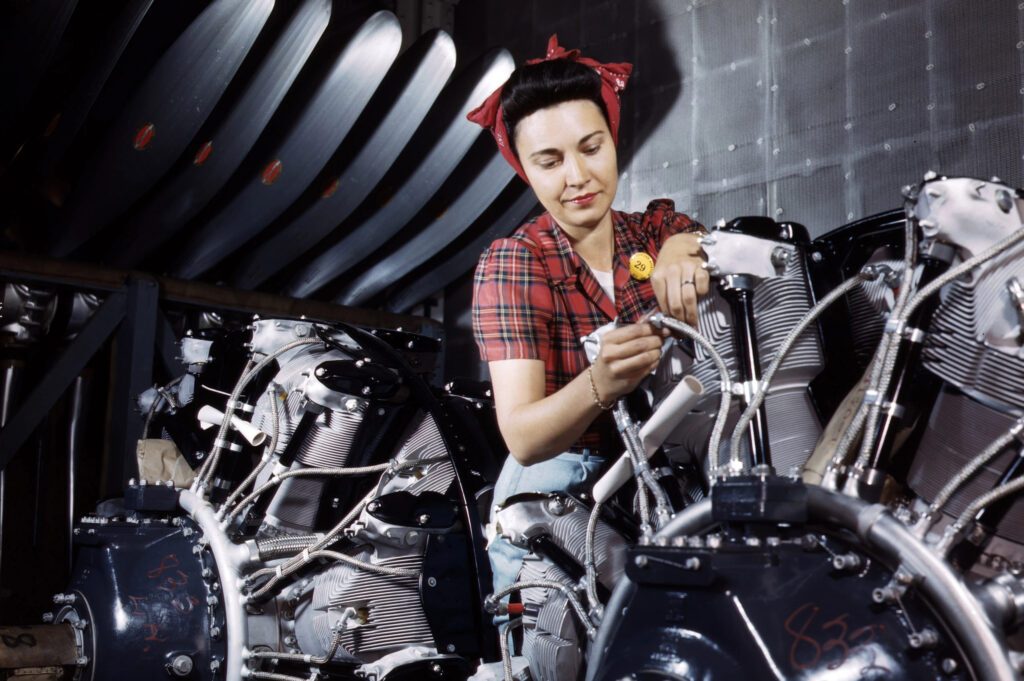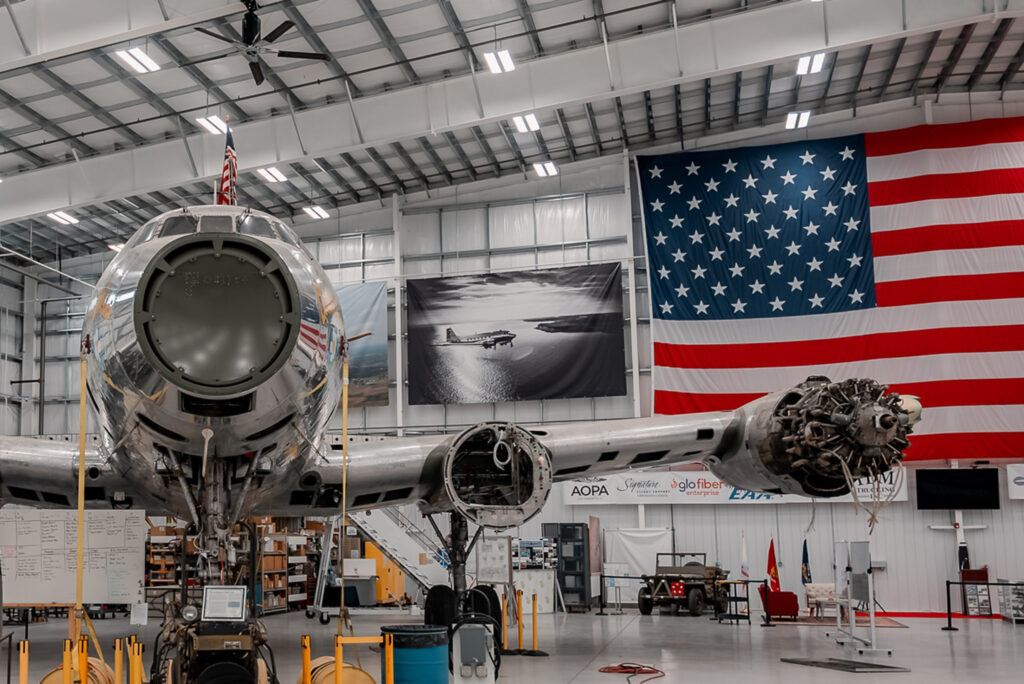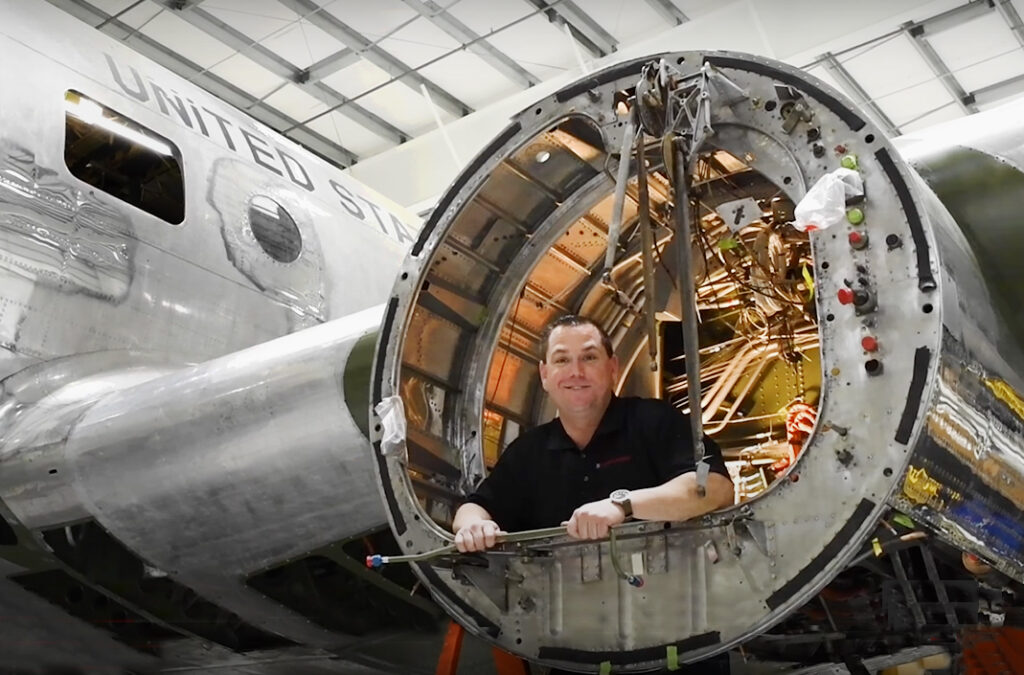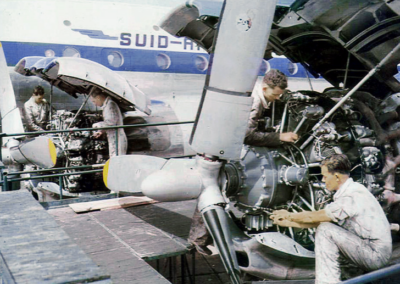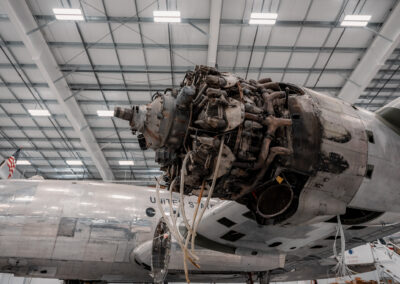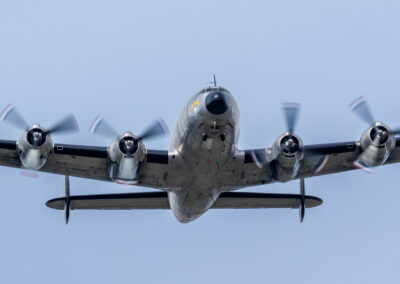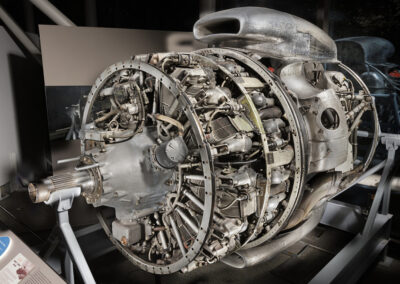Engine Overhaul
May 11, 2022
The Wright Flyer flown by Wilbur and Orville Wright at Kill Devil Hills on December 17, 1903, changed the course of history as the first sustained flight by a heavier-than-air powered and controlled aircraft was achieved. Boasting a whopping 12 horsepower, the custom-built engine featured four inline cylinders, a sprocket chain drive (bicycle technology) and a one-gallon gas tank to power the twin propellers. The Wright Brothers would go down in history as the Fathers of Aviation, opening a whole new world of travel, commerce, and national defense.
Fast forward to the 1940s and the advanced engines of the day were putting out 1,000 to 1,200 horsepower – equivalent to a 1,000x improvement over the original Wright Flyer’s powerplant. The debate over water-cooled inline engines versus radial (round) air-cooled engines resulted in the latter powering most of the world’s aircraft in this era. The Wright R-1820 Cyclone 9 was the air-cooled radial engine at the heart of many renowned aircraft including early Douglas airliners, every wartime example of the Boeing B-17 Flying Fortress and Douglas SBD Dauntless bombers.
Lockheed’s early Constellations were powered by the R-3350 Cyclone 18 – an advanced, air-cooled radial engine. First Air Force One features this engine type and although these engines were designed in the early era of flight, they are commonly featured as modern powerplants on vintage and high-performance racing aircraft. There is a worldwide industry keeping these, and other radial engines, supplied with parts, experienced labor, and professional development.
First Air Force One is in the process of having all four original engines overhauled and updated. As part of a reliability and safety package, plans include having a fifth spare on hand. R-3350s, in use as of the 2020s, run with 100 octane avgas and put out 2,500 horsepower. The earlier versions put out much more power due to the availability of higher-octane gas, but this is no longer available due to the exceedingly high toxicity of the mixture. However, the combined effort of the four engines on First Air Force One which generate nearly 10,000 horsepower is more than enough to propel her anywhere in the country in service of our nation.
“Every flight is a great adventure,” says retired Constellation Flight Engineer, Bob Trumpolt. “Picture this – it’s night, the engines are brought up to takeoff power, a mighty roar and a yellow stream of fire reaches back from those big (exhaust) stacks. As the power is reduced for climb, the fire stream begins to crawl back in. Later, as power is further reduced for cruise, engine roar subsides, props are fine-tuned to a smooth hum, and the short flame pattern turns a pretty blue. Now it’s time for the approach to landing; flaps and landing gear are extended and power increased to a loud rumble with those mighty props digging in and suddenly a small blue flame leaps out in a long yellow trail of fire. Wow, a loud and visual display of ‘thunder and lightning’ as Connie makes her final prep for landing!”
Your investment in this project will allow us to leave a legacy to future generations of dignity, freedom, and peace through America’s role in today’s world.

